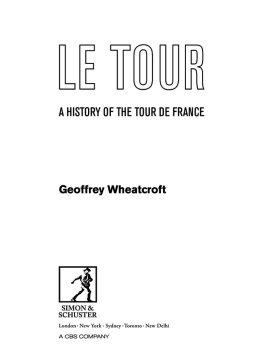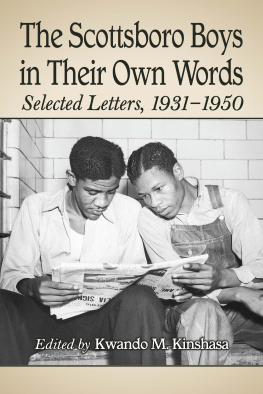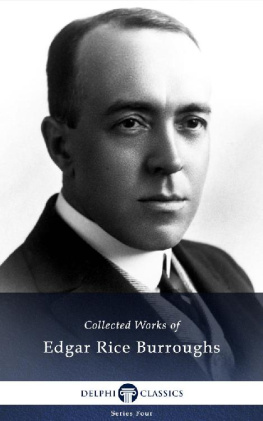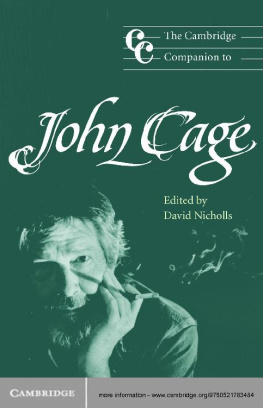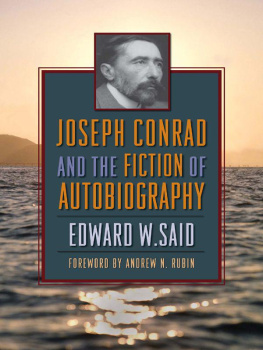Copyright 1992, 2014 by David Revill
All Rights Reserved. No part of this book may be reproduced in any manner without the express written consent of the publisher, except in the case of brief excerpts in critical reviews or articles. All inquiries should be addressed to Arcade Publishing, 307 West 36th Street, 11th Floor, New York, NY 10018.
Second Edition
PICTURE SOURCES
Artservices: pages 1, 2 top left & right , 3, 6 top & bottom right , 7 top , 10 bottom left , 12 bottom ; John Cage: page 8 bottom ; Crown Point Press: pages 13, 14; Harvard University Archives: page 9; Henmar Press, Inc., reproduced by permission of Peters Edition Limited: pages 8 top & middle , 9 top , 11 bottom , 15 top ; James Klosty: pages 5 top , 10 bottom right , 11 top , 12 top ; Manfred Leve: page 7 bottom ; Los Angeles Public Library: page 2 bottom ; Beatriz Schiller: page 15 bottom ; Virginia Tech Media Services: page 16 bottom left & right ; Nancy Walz: page 16 top ; Hans Wild: page 10 top ; Yasuhiro Yoshioka: page 9 bottom .
Arcade Publishing books may be purchased in bulk at special discounts for sales promotion, corporate gifts, fund-raising, or educational purposes. Special editions can also be created to specifications. For details, contact the Special Sales Department, Arcade Publishing, 307 West 36th Street, 11th Floor, New York, NY 10018 or .
Arcade Publishing is a registered trademark of Skyhorse Publishing, Inc., a Delaware corporation.
Visit our website at www.arcadepub.com.
10 9 8 7 6 5 4 3 2 1
Library of Congress Cataloging-in-Publication Data
Revill, David, 1964, author.
The roaring silence : John Cage: a life / David Revill.Second edition.
pages cm
Includes bibliographical references and index.
ISBN 978-1-61145-730-8 (pbk.: alk. paper) 1. Cage, John. 2. ComposersUnited StatesBiography. I. Title.
ML410.C24R5 2014
780.92dc23
[B]
Ebook ISBN: 978-1-62872-396-0
Cover design by Brian Peterson
Cover photo: AP Images
Printed in the United States of America
TO WHOM THE BOOK CONCERNS
CONTENTS
PREFACE
I
One day while I was bathing, the telephone rang. A mans voice said, Is David Revill there? My mother had answered, and she thought from his unusual voice that this was one of my friends fooling around. She said, No. Can I take a message? The mans voice said, Well, its not important. Just tell him John Cage rang.
An open-minded browse through a percussion textbook had taught me that there was more to art music than Beethoven; there was an innovative and thoughtful American composer named John Cage. As I heard and played his music and read his books (I was still a teenager), I was entranced. When I learned he was performing in London, I had written to ask if we could meet. Now here I was, dripping water onto the carpet as we set up our appointment. I spent half of the following Tuesday with John Cage in his friend Bonnie Birds London flat and at the East-West Centre on Old Street, talking about the turn-of-the-century French director Georges Mlis, anarchism and macrobiotic food and sampling mekabu soup. Cage told me, You chew very well.
That first meeting intensified my interest. He seemed a man of joyous integrity, with a rare continuity between life, work and ideas. As I heard, read and played more of Cages work, and we met again, the idea of this book emerged. Despite the extent of his fame and influence in twentieth-century culture, and the existence of articles, numerous interviews and several anthologies, there had up to that point been no general book length account of his life, work and thought. Whatever the value of Cages work and ideas, they are baffling to many peopleeven to many sympathetic to modern arts. At first ignored or ridiculed, Cage was by the end of his life in an even harder position: adored or ridiculed. Since the end of his life, this has become even harder, since there can be no continued activity or pronouncements on Cages part which might rere, however slightly, the creative misunderstandings which begin to be generated.
It is a paradox shared with many a seminal figure that Cages vilification or, inversely, the attribution of his huge importance, tends to be founded on a failure to understand his work and ideas. One side of the coin is laziness on the part of those who try to explain his work, including a sense of ownership some people projectively develop with important figures. The other is Cages own refusal to make concessions in terms of the complexity and experimentation in his work. Cage developed an art which, by exemplifying rather than expressing (as I shall explain below), was beyond the reach of customary approaches to art. My aim in this book was, and remains, to further the understanding and appreciation of Cages work and thought, to give an account of his life and to ground evaluation in an adequate understanding of him, with the possibility in mind that by so doing, it might prompt work which picks up from where Cage, and not our misunderstanding of him, leaves off.
My first step was to approach Cage for his blessing, and this book benefited enormously from that blessing (a word of mine which he slipped into quotation marks when writing back) and from the hours he generously gave to interviews and conversations.
The project also, perhaps, benefited from the fact that it grew organically from my engagement with Cages work and from knowing him personally. The effect of the former was not unlike the good fortune a rock band can have in making their first album; they have the opportunity to draw on everything they wrote up to that point, rather than the work being generated in a condensed period due to the contractual need to produce an album. The Roaring Silence was first published in 1992. As will be discussed below, publication was intended to coincide with Cages eightieth birthday, but he died just a couple of weeks prior to that, in a very Cageian example of the process of living overtaking our expectations for life. Twenty-two years later, this second edition represents a freer opportunity to expatiate on new information and new reflections.
II
Whether one agrees with his ideas or appreciates his art, anyone interested in the culture of the twentieth century, its philosophy, sociology and history, needs to know about John Cage.
One index of Cages historical significance is the company he kept. At first, musicians such as Henry Cowell and Arnold Schoenberg were his mentors. Then his circle was one of peers, for instance (to name only musicians) those who knew him in his percussion work in the forties, such as Lou Harrison, and those with whom he worked closely in the fiftiesMorton Feldman, Christian Wolff, David Tudor and Earle Brown, in particular. In Europe, Cage met Pierre Boulez and Karlheinz Stockhausen and with them he had first cordial and subsequently somewhat hostile relations. He also came to know composers such as Luciano Berio and Luigi Nono.
Then he himself began to assume the role of mentor. In the sixties, his company included composers such as Ben Johnston, Alvin Lucier, Gordon Mumma and Robert Ashley, Lejaren Hiller and Nam June Paik, all of whom record his significance. Philip Glass said that Cages book Silence changed my life and the way I think. Among rock musicians, John Cale, Brian Eno and David Byrne have spoken of the influence of Cage, and he was not only a friend but also a neighbor of John Lennon and Yoko Ono.
A similar change of role occurs in his associations with non-musicians. As a college dropout he worked with the architect Ern Goldfinger, he became friendly with John Steinbeck and came to know Max Ernst and Peggy Guggenheim. In the fifties, his circle included not only Brown, Feldman and Wolff, but also Robert Rauschenberg and, subsequently, Jasper Johns. In the following decade he became close to Marcel Duchamp. The relationship with the deepest importance for Cage was with the dancer and choreographer Merce Cunningham; they were for decades partners both in their art and in their private lives.





